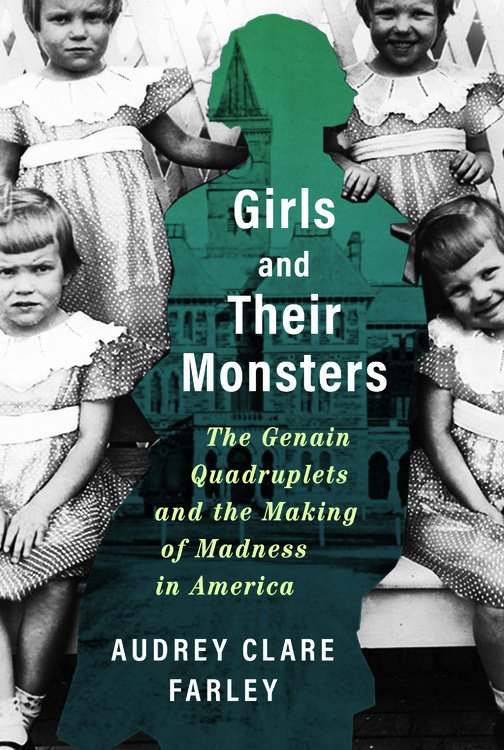GIRLS & THEIR MONSTERS
In 1954, researchers at the newly formed National Institute of Mental Health set out to study the genetics of schizophrenia. When they got word that four 24-year-old quadruplets in Lansing, Michigan, had all been diagnosed with the mental illness, they could hardly believe it. Here was incontrovertible proof of hereditary transmission and, thus, a chance to bring international fame to their fledgling institution.
The case of the pseudonymous Genain quadruplets, they soon found, was hardly so straightforward. Contrary to media portrayals of a picture-perfect Christian family, the sisters had endured the stuff of nightmares. Behind closed doors, their parents had taken shocking measures to preserve their innocence while sowing fear of the outside world. In public, the quadruplets were treated as communal property, as townsfolk and members of the press projected their own paranoid fantasies about the rapidly changing American landscape onto the fair-skinned, ribbon-wearing quartet who danced and sang about Christopher Columbus. Even as the sisters’ erratic behaviors became impossible to ignore and the NIMH whisked them off for study, their sterling image didn’t falter.
Girls and Their Monsters chronicles the extraordinary lives of the quadruplets and the lead psychologist who studied them, asking questions that speak directly to our times: How do delusions take root, both in individuals and in nations? Why does society profess to be “saving the children” when it readily exploits them? What are the authoritarian ends of innocence myths? And how do people, particularly those with serious mental illness, go on after enduring the unspeakable?
REVIEWED IN NEW YORK TIMES, LOS ANGELES REVIEW OF BOOKS, ASSOCIATED PRESS, WASHINGTON POST & TIMES LITERARY SUPPLEMENT
THE UNFIT HEIRESS
At the turn of the twentieth century, emboldened American women began to seek passion and livelihood outside the home. This alarmed authorities, who feared "over-sexed" women could destroy civilization, either by crossing the color line or passing their evident defects on to their children. Set against this backdrop, The Unfit Heiress chronicles the fight for inheritance between Ann Cooper Hewitt and her socialite mother Maryon, who had her daughter sterilized without her knowledge. A sensational court case ensued, and powerful eugenicists saw an opportunity to restrict reproductive rights in America for decades to come.
This riveting story unfolds through the brilliant research of Audrey Clare Farley, who captures the interior lives of these women on the pages and poses questions that remain relevant today: What does it mean to be "unfit" for motherhood? How do racial anxieties continue to influence who does and does not reproduce? In the battle for our rights, can we forgive those who side against us? And can we forgive our mothers if they are the ones who inflict the deepest wounds?
NAMED A BEST BOOK OF 2021 BY THE NEW YORK POST AND BOOK RIOT
NAMED A BEST TRUE CRIME BOOK OF 2021 BY CRIMEREADS

